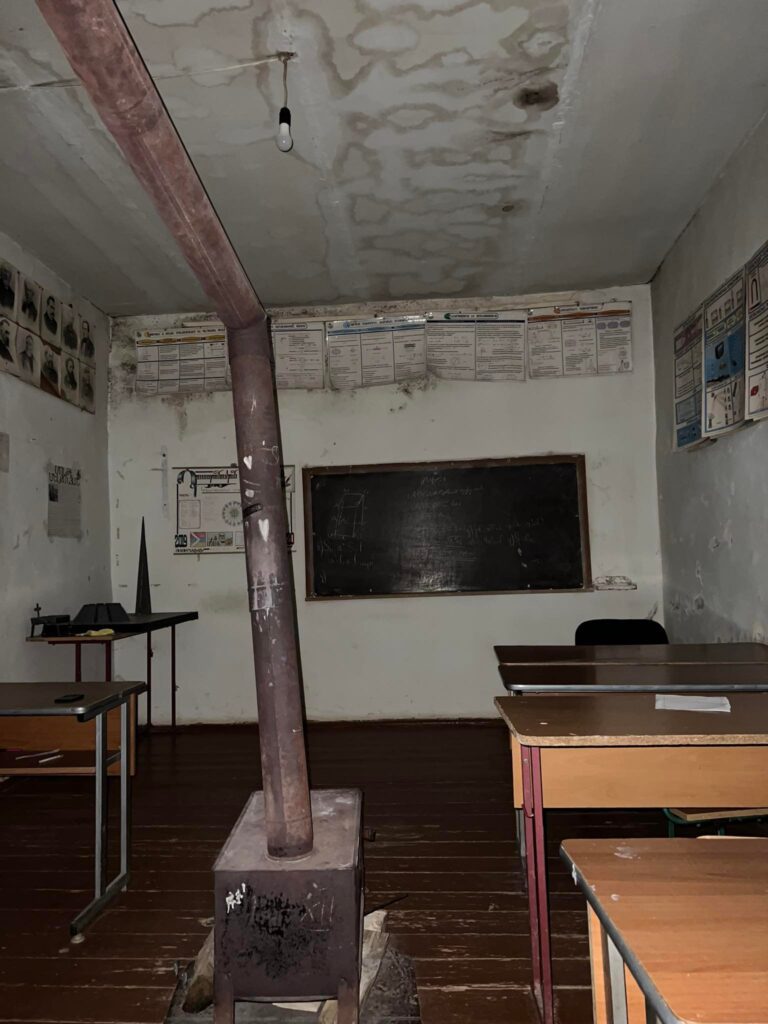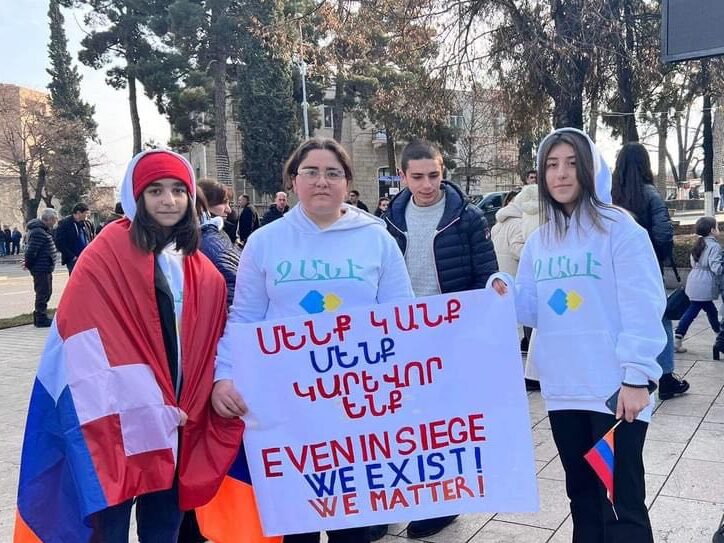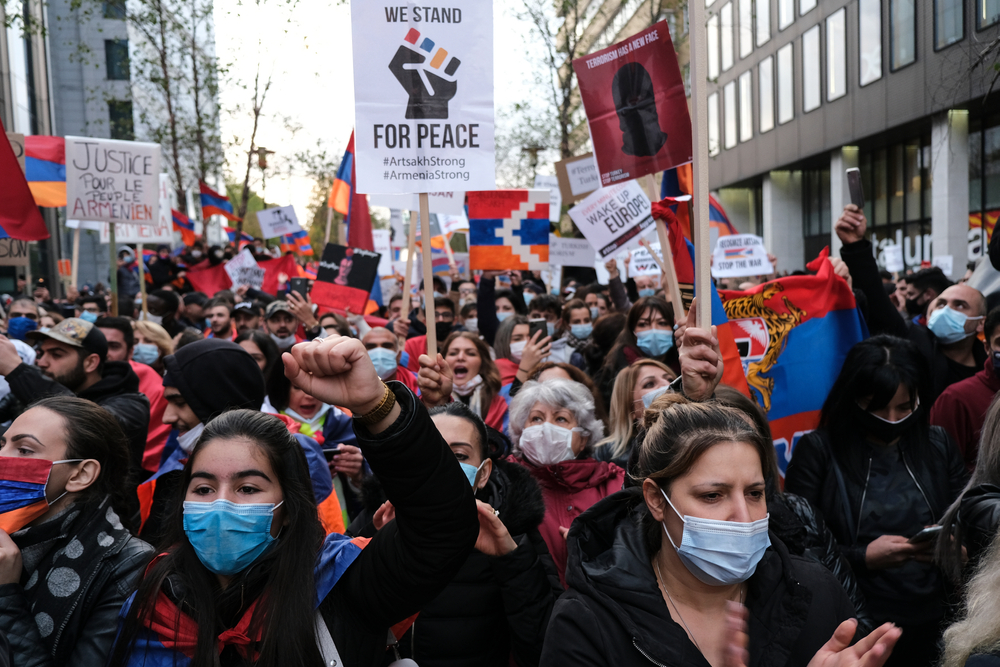This article is an opinion piece and its contents represent the standpoint of its author, not UPF Lund or The Perspective’s editorial board.
As of the time of writing this article, it has been 100 days that 120.000 Armenians in Nagorno-Karabakh (also referred to as Artsakh by Armenians), an unrecognised republic in the South Caucasus, have been cut off from the outside world without essential supplies of food and medication. The only route connecting Nagorno-Karabakh to the outside world has been blocked since December 12, 2022, by a group of self-proclaimed Azerbaijani environmentalists protesting against alleged ‘illegal mining in Nagorno-Karabakh.’ It has been more than a month since the International Court of Justice demanded Azerbaijan to ensure free movement on the blocked road, but no action has been taken by Baku to end the blockade. Moreover, the Azerbaijani side claims there is no blockade by government-backed protesters and that hundreds of trucks of Russian peacekeepers have passed the road. But considering that the people in the region are facing a humanitarian crisis and deprived of basic human rights, one can have grave concerns about Azerbaijan’s true motives. The Nagorno-Karabakh conflict is a multifaceted issue with multiple intricate layers, each of which deserves an in-depth exploration. However, this article will primarily address the humanitarian crisis caused by the blockade.
| Background Nagorno-Karabakh is a disputed territory between Armenia and Azerbaijan with a majority Armenian population. The history of the conflict dates back to the early 20th century. Despite the fact that the region has been inhabited by Armenians for centuries, during the Soviet era, Nagorno-Karabakh was made part of Soviet Azerbaijan by Soviet authorities. As the Soviet Union began to unravel, the conflict escalated again in the late 1980s with the Nagorno-Karabakh people voting to secede from Azerbaijan and join Armenia in 1988, which led to violent clashes between Armenians and Azerbaijanis. Three years after the re-escalation of the conflict, Nagorno-Karabakh held a referendum and declared its independence, but it remains unrecognised internationally. The situation led to the First Karabakh War between Armenian and Azerbaijani forces, which ended in a Russia-brokered ceasefire in 1994, and Armenian forces in control of the majority of the territories. In 2020, when the world was struggling with the pandemic, a 44-day war broke out in Nagorno-Karabakh after Azerbaijan attacked the region with the support of Turkey in late September. Following military hostilities and again a Russia-brokered ceasefire on 9th November 2020, Azerbaijan seized control of a large part of the area, displacing thousands of Armenians. After that, only one road—the Lachin corridor—remained open for Armenians to go in or out of the region under the supervision of Russian peacekeepers. This is where Azerbaijani so-called ‘activists’ have blocked the road. |
The Humanitarian Crisis
As a result of the blockade, about 400 tonnes of daily supplies to the region have been halted, resulting in shortages of essential items including food and medicine. Only International Red Cross and Russian Peacekeepers’ vehicles are allowed passage, to provide supplies. However, these supplies are not enough to meet the demand of the region. The shelves in the grocery stores in the region are empty with locals obliged to present ration cards to buy 10 eggs, 1kg of rice, pasta, sugar, buckwheat, 1 litre of oil, 4 kg of fruit, and 6 kg of vegetables as of January 20th; which is intended to last for one month.
During the whole winter, people in Nagorno-Karabakh not only suffered from essential supply shortages but also were left in darkness and cold. Apart from blocking the road, the Azerbaijani side periodically cut the gas supplies of the region, because of which state institutions, including schools, were closed, and around 27,000 children were deprived of their right to education for more than a month. Schools reopened partially on January 30, 2023, but the amount of time spent in school each day is restricted to four hours. Moreover, civilians experience power cuts for six hours every day due to the pressure on the energy system.
Human rights groups, such as Amnesty International and Human Rights Watch, have recorded the devastating results of the humanitarian crisis, especially regarding at-risk group members’ including elderly and people with disabilities. These people are deprived of their right to health service, and planned surgeries were postponed to an unknown date until the hospitals will be able to perform them. At least 10 sick patients have died because it was not possible to transfer them to Armenia for better services. Additionally, thousands of Armenians have lost their jobs due to the shutdown of infrastructures and the inability to travel to other settlements in Armenia, where they used to work.
The situation’s gravity becomes apparent when one considers the extended separation of families caused by the blockade. Around 1100 residents of the region were stuck on the other side of the blockade and were not able to return home even for Christmas and New Year. Among those were, for example, 19 children who went to Yerevan, Armenia to watch the Junior Eurovision song contest the day before the blockade. After 40 days of being apart from their families, the children were transferred to Nagorno-Karabakh with the mediation of the Red Cross. While on the road, they were harassed by Azerbaijani ‘activists’ that “shouted demonstratively, broke into the vehicle wearing masks, illegally filmed the children and subjected them to psychological violence.”
Who are the ‘eco-activists’ and what do they want?
The demand of the ‘eco-activists’ is for Baku to have permission to examine the ore mines situated in Nagorno-Karabakh and evaluate their ecological effects, which the Azerbaijani government has supported. Half a month since the beginning of the blockade, the authorities in Nagorno-Karabakh announced the temporary halting of the mining operation in the region, and that they opted to request an ‘international ecological examination’ to refute the Azerbaijani allegations.
However, the road continues to be blocked with information available in open sources including social media posts by the ‘protestors’ showing that this group can actually be government-backed since they are members of the ruling party of Azerbaijan, state agencies, and various institutions operating under different state bodies of Azerbaijan. Moreover, the activists have not been seen protecting the environment before with some informal facts talking more about them; some of them are famous for their anti-Armenian stands or some are military officers disguised as civilians.
This information raises significant doubts about the genuine concern of the Azerbaijani group. The fact that ‘the activists’ have tight connections with the government makes it more apparent that the blockade is organised by the Azerbaijani authorities that seek to gain control over the entire region. The official rhetoric of the Azerbaijani side is that the people in the region should be considered Azerbaijani citizens, but they can only have cultural autonomy, and that there can be no referendum for any other status. In an interview published one month after the beginning of the blockade, Azerbaijan’s President Ilham Aliyev announced that those who do not wish to obtain Azerbaijani citizenship are free to leave the region. This is a simple violation of the right to self-determination.
Looking at these facts one can get the impression that the Azerbaijani side aims to scare people into leaving the area through the physical and psychological pressure caused by the blockade.


“How come my rights are violated and no one talks about that?”
A local resident, Ashot Gabrielyan, gave an interview to The Perspective describing the main challenges in the region and the mechanisms the people use to cope with those.
Disclaimer: Any opinions expressed in the following interview belong solely to the interviewee and do not represent the views and opinions of the author, the editorial staff of The Perspective, or UPF Lund.
“Personally, it’s difficult for me to understand how in the 21st century I am not able to be free. How come my rights are violated and no one talks about that? How come I am not in charge of what I eat, where I go, and how I go?” — Ashot also mentioned that the main problem is the daily, psychological tension created by Azerbaijan.
Gas and petrol shortages resulted in transportation issues. Ashot said that finding a vehicle to move from one place to another comes at a premium price, since there are no taxis or other transportation vehicles working.
Ashot works as a teacher at a primary school in Kolkhozashen, a village of the region. Talking about his students, he mentioned that they are often worried about their future, which in turn affects their studies. There are also issues with the teachers not being able to teach in person because “they have to travel from distant places, and the transportation problem makes it challenging for them to attend school in person. Online classes are also difficult to organise because of the lack of electricity and internet. Furthermore, some teachers who are on the other side of the blockade are unable to return to Artsakh to hold their classes.”
However, the students, Ashot stated, clearly understand the situation. “They are very aware of the things happening around them and they try to raise their voices and make the world hear them. They are planning new community projects to develop ways to create new gas sources or food cultivating methods and so on.”
According to Ashot, they did not expect the blockade to last this long. He mentioned that the first time the road was only closed for two hours. “We all thought that the second time was going to be the same. We thought they would open the road sooner or later.” [Authors note: Before the blockade, on December 3, 2022, a group of Azerbaijani people closed the road for the same reason, but the road was opened after several hours of negotiations with the Russian peacekeepers].
With all of these challenges, people in Nagorno-Karabakh are considering all alternatives to solve some of the most pressing issues. As explained by Ashot, “the scarcity of food is a widespread problem in villages, and the coupons provided for food and vegetables are insufficient to meet the needs of the residents. As a result, many people have started developing new types of food cultivation.”
“But we must bear in mind that unless Artsakh is connected to Armenia, the situation will stay critical” notes Ashot.


Considering the background and the implications of the 3-month-long blockade of Nagorno-Karabakh and its 120.000 inhabitants, suggests that the true goal of the Azerbaijani group is not to address ‘environmental concerns’, but rather to apply psychological and physical pressure on the Nagorno-Karabakh population. This may well be seen as an attempt to force migration out of the region. The situation and its accompanying issues are complex, making it impossible to discern every nuance of the conflict. Nonetheless, this is a humble attempt to shed light on the humanitarian crisis that is currently unfolding, but unfortunately receives little attention.
By Milena Ayvazyan








